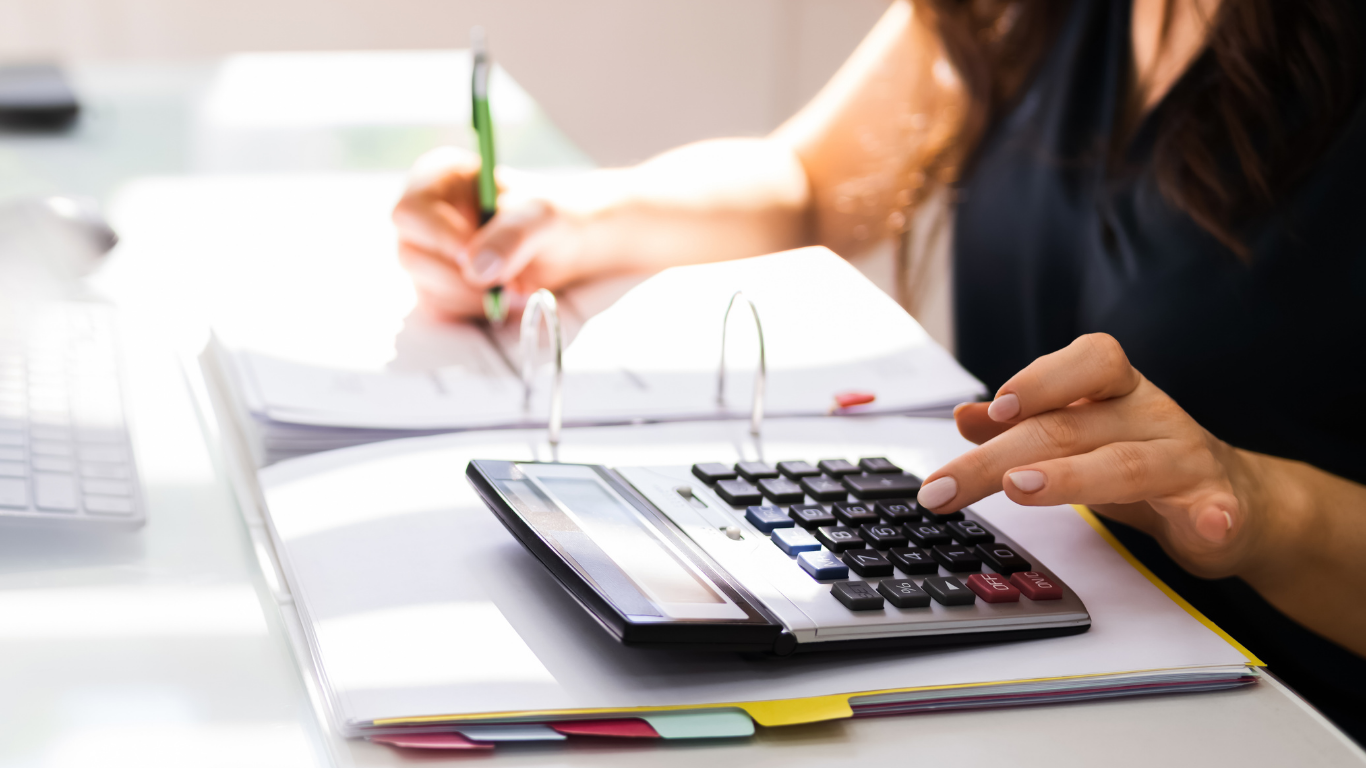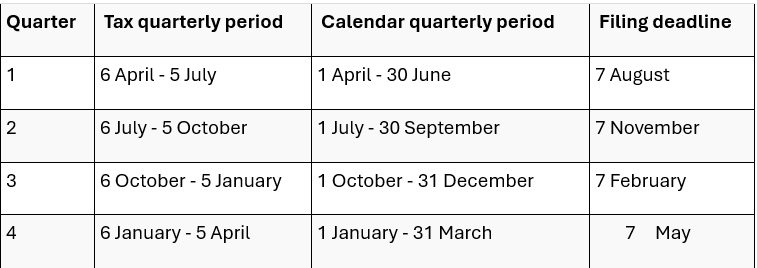
HMRC has confirmed that Making Tax Digital (MTD) for Income Tax will be introduced from 6 April 2026, marking a major shift in how landlords and self-employed individuals manage and report their income tax.
From that date, MTD for income tax will apply to anyone with a qualifying income (not profit) of more than £50,000 per year from self-employment or property. The income threshold will gradually reduce in the following years:
That means hundreds of thousands of landlords will need to change the way they keep records and report income. Instead of submitting a self-assessment tax return once a year, you’ll be required to keep digital records and submit updates to HMRC every quarter using Making Tax Digital-compatible software.
According to HMRC, around 780,000 landlords and self-employed individuals will be affected in the first phase from April 2026, with another 970,000 joining in 2027.
The Government has published a policy paper, ‘Making Tax Digital for Income Tax elf Assessment for sole traders and landlords’, which explains the background to the measure.
If your annual rental income (before expenses) is over £50,000 from April 2026, you’ll need to:
You’ll need to purchase your own MTD-compatible software - it won’t be provided by HMRC.
Under Making Tax Digital for Income Tax, the traditional annual self-assessment return will be replaced with quarterly submissions and one final declaration. The aim is to spread the workload across the year and reduce the pressure of the end-of-year tax deadline. For landlords, this means greater visibility and control over your finances throughout the year.
Instead of filing once annually, you’ll need to:
These changes are designed to make the tax system more accurate and reduce last-minute surprises for landlords and small business owners.
HMRC is encouraging landlords and self-employed individuals to join the MTD testing programme ahead of the official rollout in April 2026. Signing up early means you can familiarise yourself with the new system before penalties apply and get support during the transition. Sign up for HMRC’s Making Tax Digital testing programme.
According to James Murray MP, Exchequer Secretary to the Treasury:
“MTD for Income Tax is an essential part of our plan to transform the UK's tax system into one that supports economic growth. By modernising how people manage their tax, we're helping businesses work more efficiently and productively while ensuring everyone pays their fair share.”
Craig Ogilvie, HMRC’s Director of Making Tax Digital, describes it as:
“The most significant change to the self-assessment regime since its introduction in 1997. It will make it easier for self-employed people and landlords to stay on top of their tax affairs and help ensure they pay the right amount of tax.”
MTD has already been introduced for VAT, and a 2021 independent report found that:
These early successes suggest that, while MTD for Income Tax may feel like a big change, it also has the potential to simplify the process for many landlords over time.
If you choose to sign up to the testing phase voluntarily, penalties for late quarterly updates won’t apply. This gives you a risk-free opportunity to get used to the new system.
While HMRC has confirmed many of the changes, some details are still being finalised. This article is intended as general guidance only and does not constitute legal or financial advice. We recommend consulting a qualified tax professional before taking any action.
This guide is designed to help you understand what Making Tax Digital (MTD) means for landlords and how to prepare ahead of the 2026 rollout. Whether you're managing a single property or an entire portfolio, MTD will change how you report your income to HMRC. But with the right preparation, it can also make your tax admin simpler and more efficient.
In the next sections of this guide, we’ll walk you through:
By the end of this guide, you’ll have a clear understanding of your obligations, the tools you’ll need, and how to take action now to avoid disruption later.
Making Tax Digital for Income Tax is a government initiative that requires businesses, including landlords, to keep digital records and submit tax returns online using MTD-compatible software.
If you're affected, you'll no longer submit a single self-assessment tax return each year. Instead, you'll need to:
This change is designed to make tax reporting more accurate and efficient, reducing errors and helping landlords manage their finances in real time.
From 6 April 2026, MTD will apply to landlords and self-employed individuals with qualifying income (not profit) above:
If your gross rental income (before expenses) is above these thresholds, you will need to comply.
Qualifying income includes the total gross income from all your sole trader and/or property business activities before deducting any expenses.
Some landlords may be exempt from Making Tax Digital if they can demonstrate that it's not reasonably practical to use digital tools due to:
You’ll need to apply to HMRC for an exemption, which will be reviewed on a case-by-case basis. Find out more about applying for an exemption from Making Tax Digital for Income Tax.
MTD for Income Tax applies to the following income sources:
The following types of income do not count towards the MTD threshold:
Yes, if you meet the turnover threshold and you don’t meet any of the exemption criteria, you must comply with MTD from 6 April 2026.
What does MTD mean for self-employed landlords?
MTD applies to all landlords who have property income above the threshold regardless of whether they are employed or self-employed. It includes landlords who:
Landlords should aim to sign up for MTD before 6 April 2026, but you can voluntarily enrol now in HMRC’s MTD pilot scheme. This allows you to familiarise yourself with the new process before it becomes mandatory.
Signing up early can reduce stress and give you time to test out software, ask your accountant for help, and avoid costly mistakes.
Find out how to register for Making Tax Digital for Income Tax.
While MTD doesn’t change what records you need to keep, it does change how you keep them. You must use MTD-approved software to record:
These records must be kept digitally for at least seven years.
If you're used to using spreadsheets or paper records, moving to a digital system may feel like a big step, but most MTD-compatible software includes user-friendly dashboards, automated reminders, and training resources to make the transition easier.
Here’s a simple checklist to help you get started:
Under Making Tax Digital for Income Tax, landlords will need to submit quarterly updates to HMRC.
Here are the key dates:

Following these four quarters a year-end Final Declaration Statement must be then made to finalise your income tax position with HMRC. The information provided will be used to generate your self-assessment tax bill for that tax year. This must be filed by 31 January following the relevant tax year, the same deadline as the current self-assessment process.
There are no changes to how you pay your tax. You’ll still need to:
MTD changes the way you report, but not when or how you pay.
Check out our article, ‘Tax deadline on 31 January: what landlords need to know’ and our tax guide for landlords for more information.
You’ll need to use commercially available software that is approved by HMRC for MTD for Income Tax. This software will help you:
Here’s what to look for:
Many software providers offer free trials, so test a few options before committing. Some are cloud-based, while others are desktop software - check for reliable internet access and compatibility with your device.
Once your chosen software is set up, you’ll be able to:
Remember, you’ll still need to submit your final tax return (Final Declaration) by 31 January following the end of the tax year.
If your property income exceeds the threshold and you don’t qualify for an exemption, you are legally required to comply with Making Tax Digital by 6 April 2026.
Here’s how to get ahead:
Once you get used to the system, you may find MTD makes managing your tax more structured, transparent and less stressful. Some landlord focussed software packages that work with MTD will also assist in managing your property portfolio, so make sure your thoroughly research the market before committing to any one package.
For more tax guidance, read Total Landlord’s tax guide for landlords.
